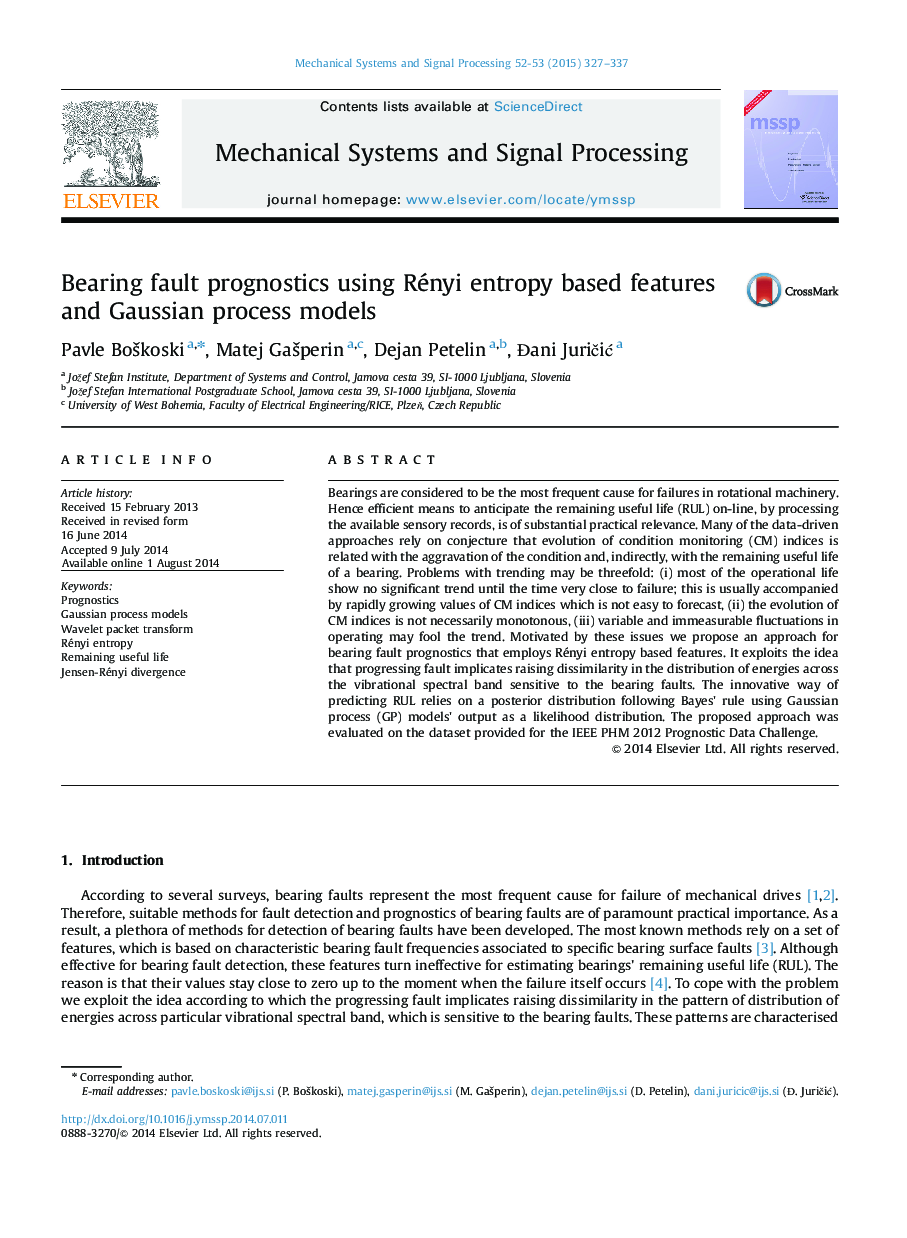| Article ID | Journal | Published Year | Pages | File Type |
|---|---|---|---|---|
| 6956309 | Mechanical Systems and Signal Processing | 2015 | 11 Pages |
Abstract
Bearings are considered to be the most frequent cause for failures in rotational machinery. Hence efficient means to anticipate the remaining useful life (RUL) on-line, by processing the available sensory records, is of substantial practical relevance. Many of the data-driven approaches rely on conjecture that evolution of condition monitoring (CM) indices is related with the aggravation of the condition and, indirectly, with the remaining useful life of a bearing. Problems with trending may be threefold: (i) most of the operational life show no significant trend until the time very close to failure; this is usually accompanied by rapidly growing values of CM indices which is not easy to forecast, (ii) the evolution of CM indices is not necessarily monotonous, (iii) variable and immeasurable fluctuations in operating may fool the trend. Motivated by these issues we propose an approach for bearing fault prognostics that employs Rényi entropy based features. It exploits the idea that progressing fault implicates raising dissimilarity in the distribution of energies across the vibrational spectral band sensitive to the bearing faults. The innovative way of predicting RUL relies on a posterior distribution following Bayes׳ rule using Gaussian process (GP) models׳ output as a likelihood distribution. The proposed approach was evaluated on the dataset provided for the IEEE PHM 2012 Prognostic Data Challenge.
Keywords
Related Topics
Physical Sciences and Engineering
Computer Science
Signal Processing
Authors
Pavle BoÅ¡koski, Matej GaÅ¡perin, Dejan Petelin, Äani JuriÄiÄ,
